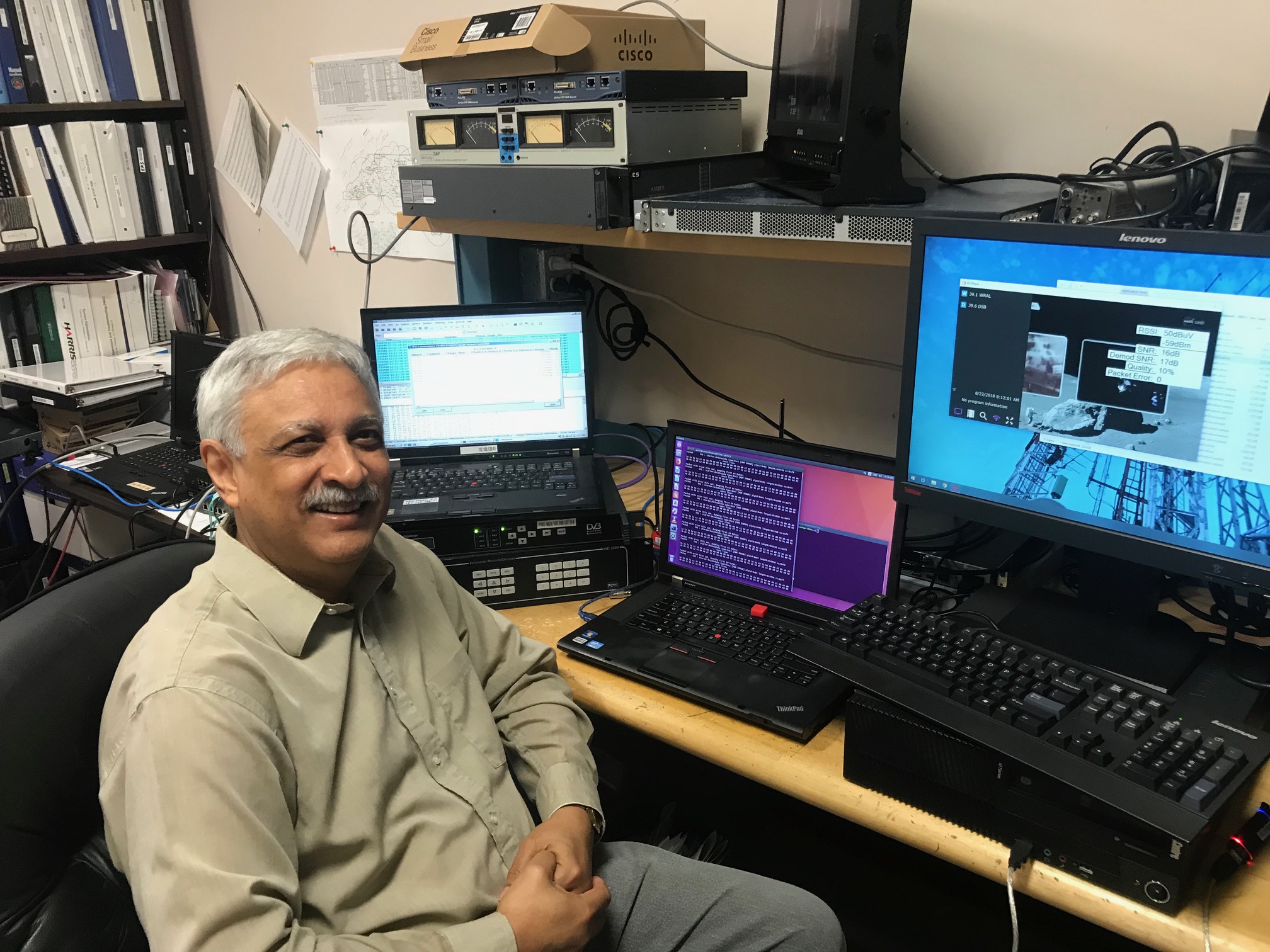PILOT-ing a New Communications Option for First Responders
Two years ago, NAB launched its PILOT program, an initiative designed “to bring together leading-edge companies, organizations and educators to advance broadcast technology and broadcaster innovation.” Numerous companies including Accenture, Frankly, IBM, Google and Nielsen have joined the coalition that helps drive the research, creation, testing and implementation of new technologies and solutions.

Last month NAB announced its third annual PILOT Challenge. The program recognizes creative ideas that leverage technological advances in the production, distribution and display of engaging content. It also provides support to the winners for development. The challenges are supported by a grant from the John S. and James L. Knight Foundation.
I had a chance to talk with the winner of the grand prize in last year’s challenge, UNC-TV, which won for its proposal to use the ATSC 3.0 standard to enable North Carolina’s public safety community to provide timelier response to emergencies by datacasting over broadcast signals.
Fred Engel, senior director of technology at Public Media North Carolina/UNC-TV explained the proposal, which stemmed from a suggestion from Red Grasso, North Carolina’s FirstNet Single Point of Contact with the state Department of IT. Grasso, a former firefighter and fire department communications expert, was concerned that a local fire department was considering purchasing new analog voice paging radios, but “the idea of ‘new’ and ‘analog’ just didn’t roll off his tongue real well,” Engel said. Grasso approached UNC-TV to inquire whether ATSC 3.0 might provide a new means of alerting for first responders.
Those of us old enough to remember the TV series “Emergency,” will recall one of its signature moments when an emergency was called into the local fire station; after the tones sounded, a voice would announce the details of the emergency, including who was to respond and what they were responding to. In the real world, that part of the alert could last up to a minute depending on the severity of the emergency. That technology, which is still being used in many stations, is analog-based, which limits its capabilities, according to Engel.

Based on a real life event of a multiunit dispatch for a fire Engel said it took 67 seconds from the time the very first tone alert was generated to the end of the voice alert. “During that 67 seconds, if there’s any other incidents that happen, they all have to wait until that one is fully communicated before the next one will be announced,” Engel said. “So, depending on what else is going on, whether it’s a car accident, cardiac arrest, whatever, those all have to wait.”
The goal was to provide a text-based protocol that would provide instant alerts to first responders’ pagers, and help reduce delays in providing follow up alerts. And providing text alerts would allow those first responders to better retain the information. Cellular was not an alternative because insurance carriers don’t recognize cellular as an approved method of delivering this kind of message to first responders, Engel said. So how about broadcast?
[Read: NAB Launches Third Annual PILOT Innovation Challenge]
Around this time, in late 2016, the National Institute of Science and Technology issued a grant request for proposals to improve public safety communications, including new ways to “provide resilient systems to deliver emergency messaging.” UNC-TV, along with PBS, local broadcaster WRAL-TV and local public safety officials collaborated on applying for the grant but were unsuccessful, so Engel turned his attention to the PILOT challenge that was issued around the same time.
Engel said UNC-TV had previously done some 911 dispatch testing with ATSC 1.0 but there were several factors that led them to propose ATSC 3.0 as a solution, namely the mobility factor and the robustness of the Next Gen TV signal, particularly for indoor penetration.
Engel and his group successfully conducted their first test this spring, transmitting emergency information from a local fire department dispatch center to the UNC-TV campus using WRAL’s ATSC 3,0 test signal. Engel says further testing is in the works, based on feedback his group received from a meeting with public safety officials and commercial product manufacturers in July.
There are a lot of elements to take into account, not the least is getting manufacturers to add ATSC 3.0 receivers into the pagers but Engel acknowledges that the project is in the very early stages, adding that there has been interest from other corners of the public broadcasting community.
“They’re all interested in this, to see how this might take off, because it’s the kind of thing that that just makes our networks more vital to the states we serve,” Engel said.
The deadline for entering the third annual PILOT Challenge is Oct. 19. For more information, visit https://nabpilot.org/challenge.
For a comprehensive list of TV Technology’s ATSC 3.0 coverage, see our ATSC3 silo.
Get the TV Tech Newsletter
The professional video industry's #1 source for news, trends and product and tech information. Sign up below.
Tom has covered the broadcast technology market for the past 25 years, including three years handling member communications for the National Association of Broadcasters followed by a year as editor of Video Technology News and DTV Business executive newsletters for Phillips Publishing. In 1999 he launched digitalbroadcasting.com for internet B2B portal Verticalnet. He is also a charter member of the CTA's Academy of Digital TV Pioneers. Since 2001, he has been editor-in-chief of TV Tech (www.tvtech.com), the leading source of news and information on broadcast and related media technology and is a frequent contributor and moderator to the brand’s Tech Leadership events.

